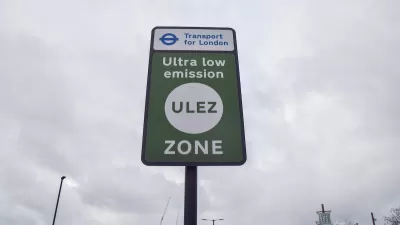Traffic on a Louisville freeway fell by half after a toll was implemented. Could this be the best way to reduce traffic congestion?

Writing in City Observatory, Joe Cortright suggests that congestion pricing is one of the most effective ways to reduce traffic. He points to an example from Louisville, where traffic on Interstate 65 fell by half after Indiana and Ohio instituted a $1 to $2 toll on a bridge across the Ohio River.
The two states spent a billion dollars doubling the size of I-65, only to have half as many people use the bridge. That money was wasted. Nothing more clearly illustrates the utter folly of highway expansions. As we’ve pointed out, highway engineers size roadways based on the assumption that the users will pay nothing for each trip. … But ask people to pay, and you’ll get fewer takers.
According to Cortright, this suggests that most drivers don't want to pay to use roads, and will avoid toll roads by taking alternate routes or alternate modes of transport, or not making some trips at all. Even a small toll, such as Louisville's $1 to $2 fee, can have a noticeable impact on congestion and road usage. Meanwhile, highway expansion has been repeatedly shown to induce demand and encourage more driving. While state DOTs have been slow to implement congestion pricing programs, road pricing, Cortright argues, is a "surefire fix for traffic congestion."
FULL STORY: How to solve traffic congestion: A miracle in Louisville?

Alabama: Trump Terminates Settlements for Black Communities Harmed By Raw Sewage
Trump deemed the landmark civil rights agreement “illegal DEI and environmental justice policy.”

Planetizen Federal Action Tracker
A weekly monitor of how Trump’s orders and actions are impacting planners and planning in America.

Why Should We Subsidize Public Transportation?
Many public transit agencies face financial stress due to rising costs, declining fare revenue, and declining subsidies. Transit advocates must provide a strong business case for increasing public transit funding.

Understanding Road Diets
An explainer from Momentum highlights the advantages of reducing vehicle lanes in favor of more bike, transit, and pedestrian infrastructure.

New California Law Regulates Warehouse Pollution
A new law tightens building and emissions regulations for large distribution warehouses to mitigate air pollution and traffic in surrounding communities.

Phoenix Announces Opening Date for Light Rail Extension
The South Central extension will connect South Phoenix to downtown and other major hubs starting on June 7.
Urban Design for Planners 1: Software Tools
This six-course series explores essential urban design concepts using open source software and equips planners with the tools they need to participate fully in the urban design process.
Planning for Universal Design
Learn the tools for implementing Universal Design in planning regulations.
Caltrans
Smith Gee Studio
Institute for Housing and Urban Development Studies (IHS)
City of Grandview
Harvard GSD Executive Education
Toledo-Lucas County Plan Commissions
Salt Lake City
NYU Wagner Graduate School of Public Service





























